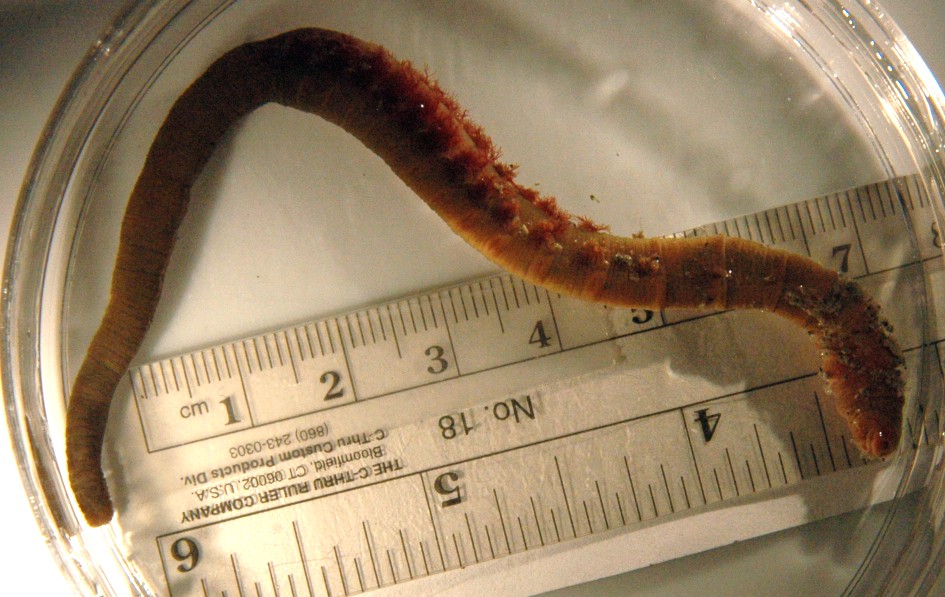How to Distinguish from Similar Species:Arenicola marina has the neuropodia of its posterior gill-bearing segments nearly meeting at the midventral line. Abarenicola claparedi has the ventral side of its nephridiopores covered with a flap of skin and it lives in areas with more wave action. Many lugworms (family Arenicolidae) can be fully reliably distinguished only by internal anatomy.
Geographical Range: Japan, Pacific coast from Alaska south to Humboldt Bay in northern California
Depth Range: Intertidal and subtidal; mostly intertidal.
Habitat: Muddy sand of quiet, non-exposed bays
Biology/Natural History:
Lives in an L-shaped burrow, head down. It everts its
esophagus then
pulls it in, thus ingesting mud and feeding on organisms such as
nematodes
within it. Periodically it backs up to near the surface to
defecate,
forming the characteristic mound around its burrow. The mound
will
often have coils of castings roughly 1/2 cm in diameter. The
lugworm
pulses its body while within the burrow to bring in oxygenated water.
| Return to: | |||
| Main Page | Alphabetic Index | Systematic Index | Glossary |
References:
Dichotomous Keys:Carlton, 2007
Kozloff, 1987, 1996
General References:
Kozloff,
1993
Lamb
and Hanby, 2005
Niesen,
1994
Niesen,
1997
Ricketts
et al., 1985
Sept,
1999
Scientific Articles:
Web sites:
General Notes and
Observations: Locations,
abundances, unusual behaviors:
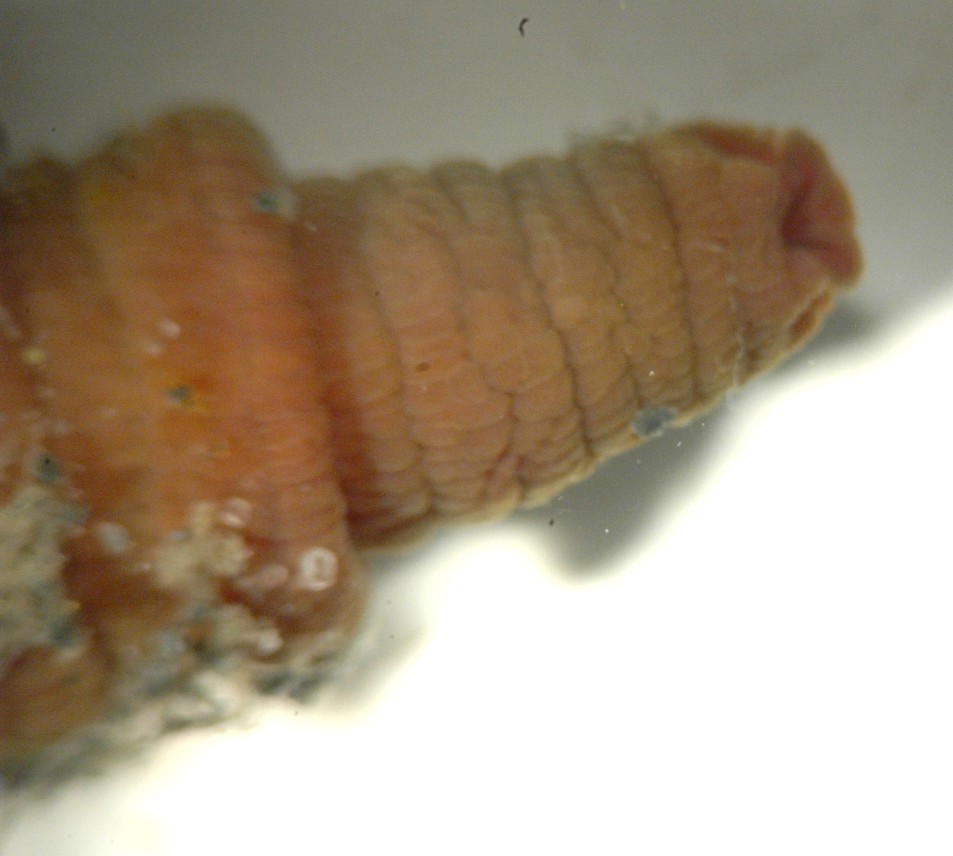
This ventral view of the head shows that it has no obvious external
head appendages
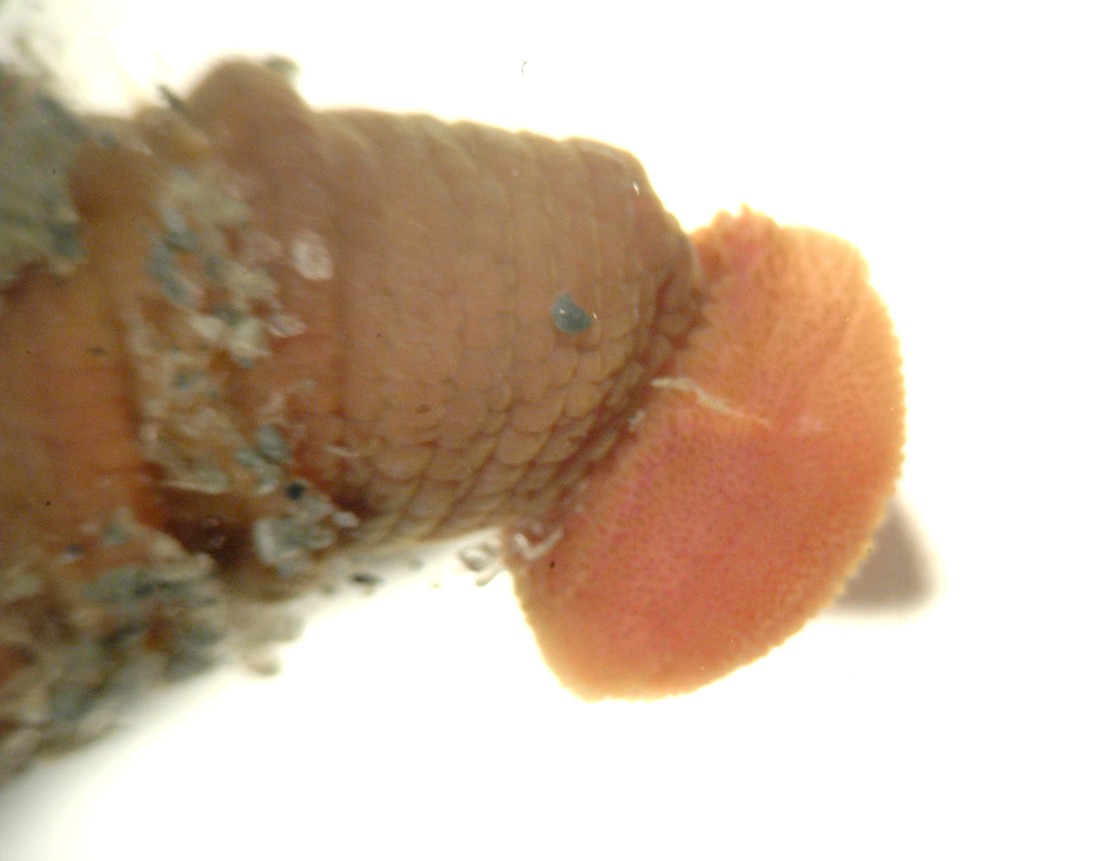
This view, taken a few seconds after the one above, shows the large
esophagus which is everted
during feeding. The esophagus expands outward like the head
of a
mushroom.
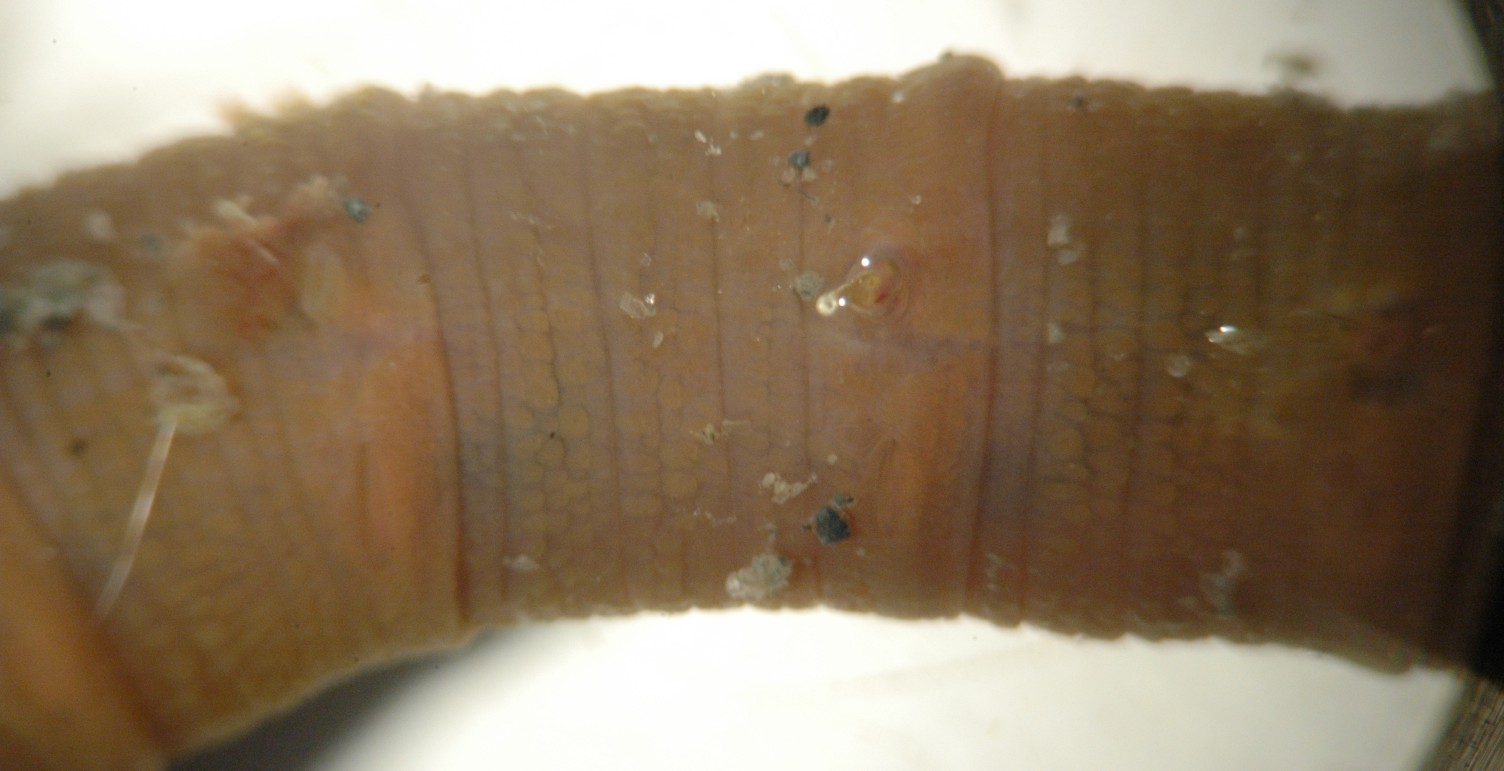
The anterior third of the body, anterior to the gills, has
relatively
long segments and the notopodia
and neuropodia
are
well separated. In this view the head is to the right and
dorsal
is up. The first gill-bearing segment is on the
left. The capillarynotosetae-bearing
notopodium
can be seen near the top of the segment in the center, while the uncini-bearing
neuropodium
can be seen well below the notopodium
next to the piece of debris.
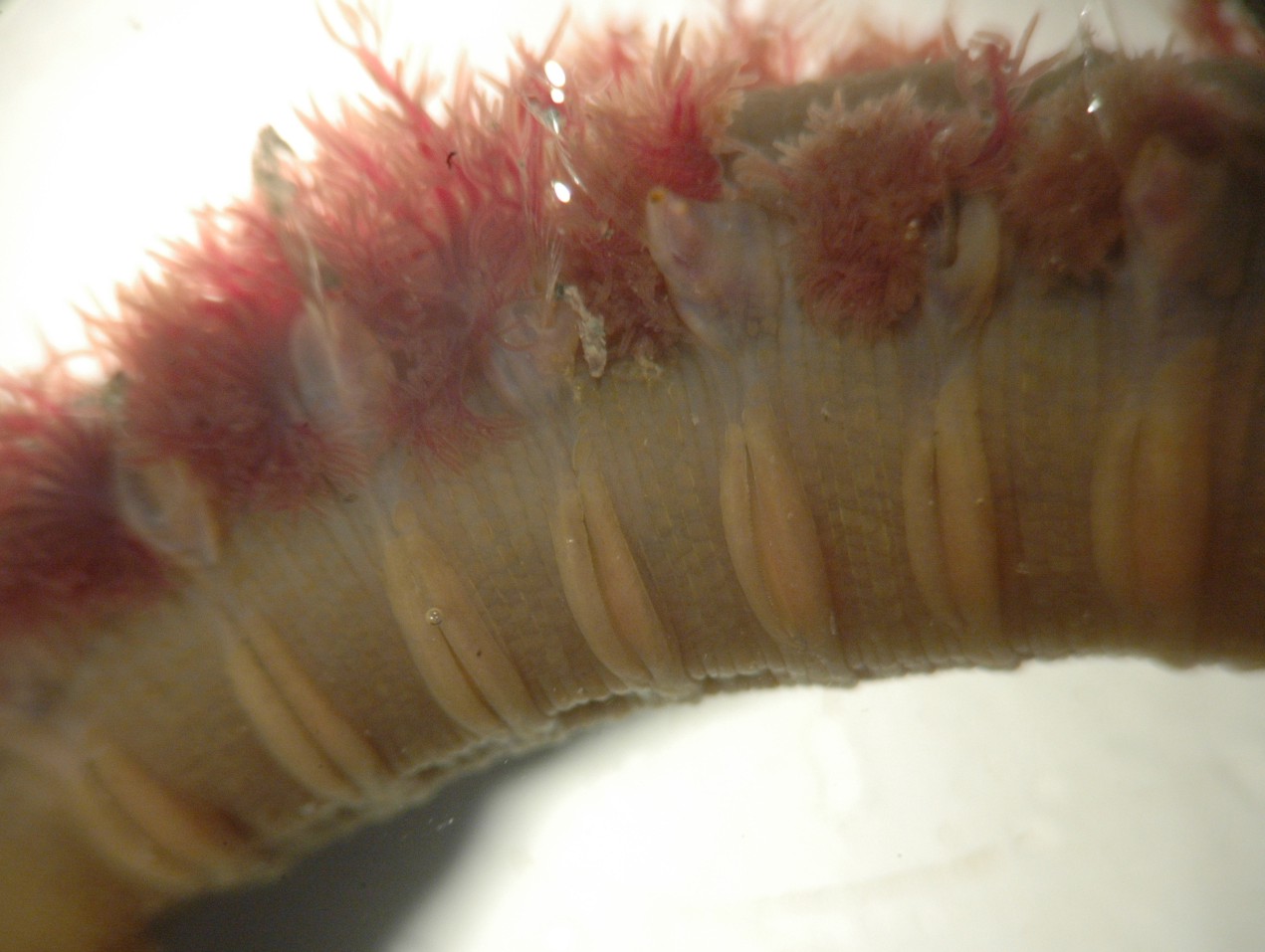
The gills are notopodial
(dorsal) and filled with hemoglobin-containing blood. The
animal
writhes and waves them gently, likely increasing water circulation over
them. Note the long capillary
setae on the notopodia
(top) and the uncini
on the neuropodia
(lower).
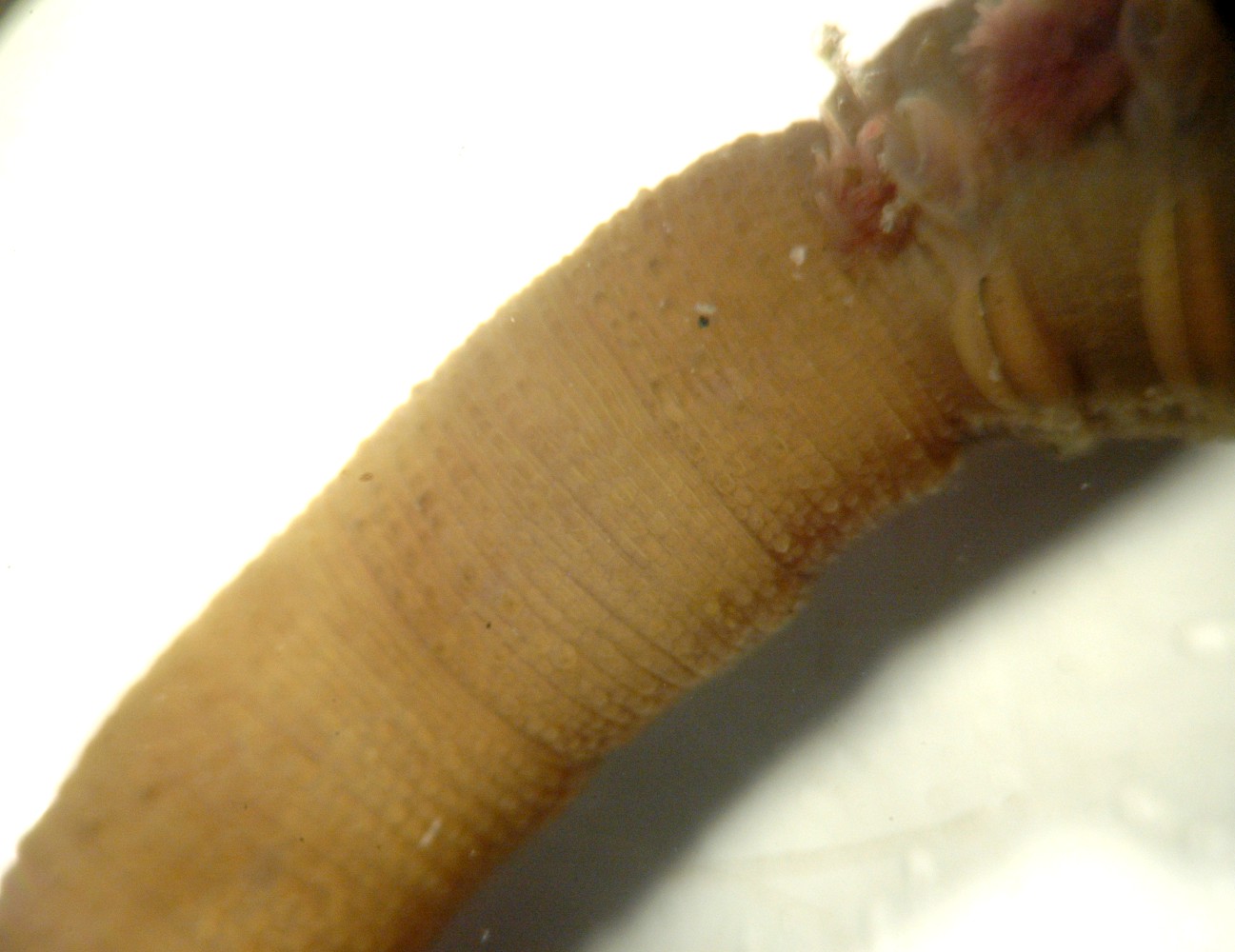
The posterior segments have no setae, so that the back third of the
body appears almost like a "tail". Note the last gill and setae-bearing
segments at the right of the photo.
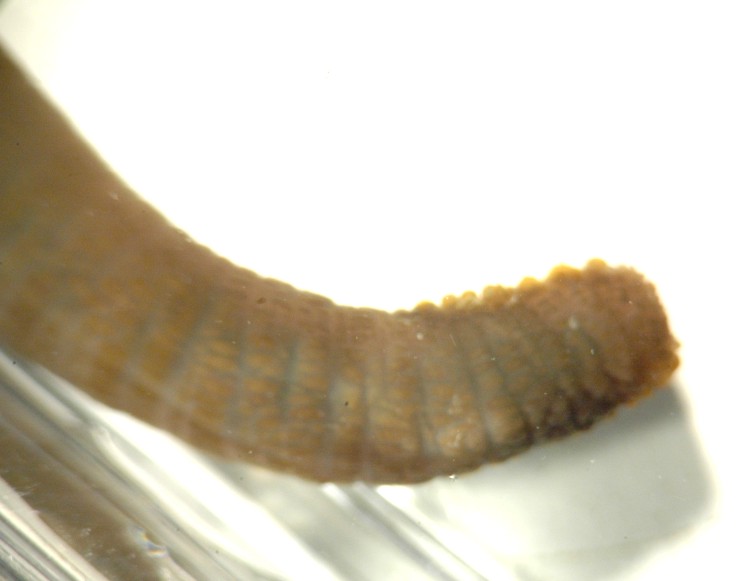
This is a view of the last segments and the pygidium (posteriormost
segment)
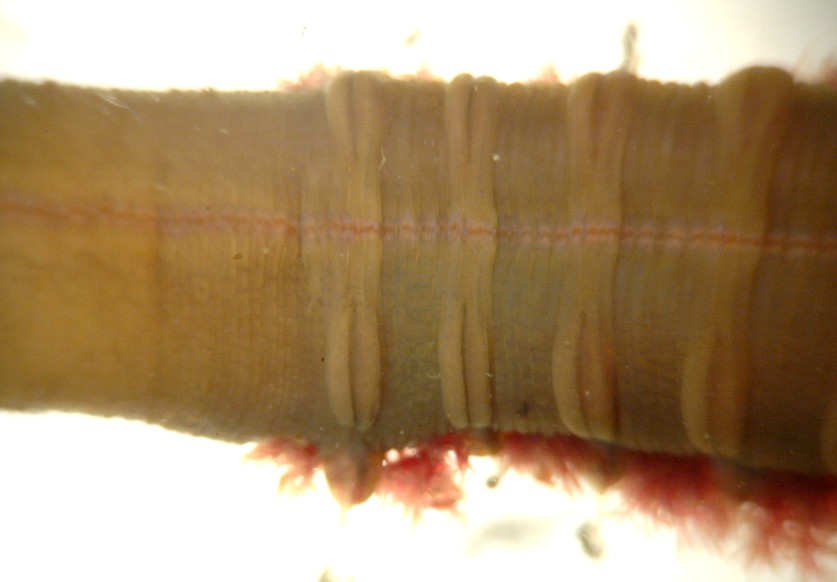
This ventral view of the posteriormost gill-bearing segments shows
that the neuropodia
of these segments do not nearly meet at the midline.
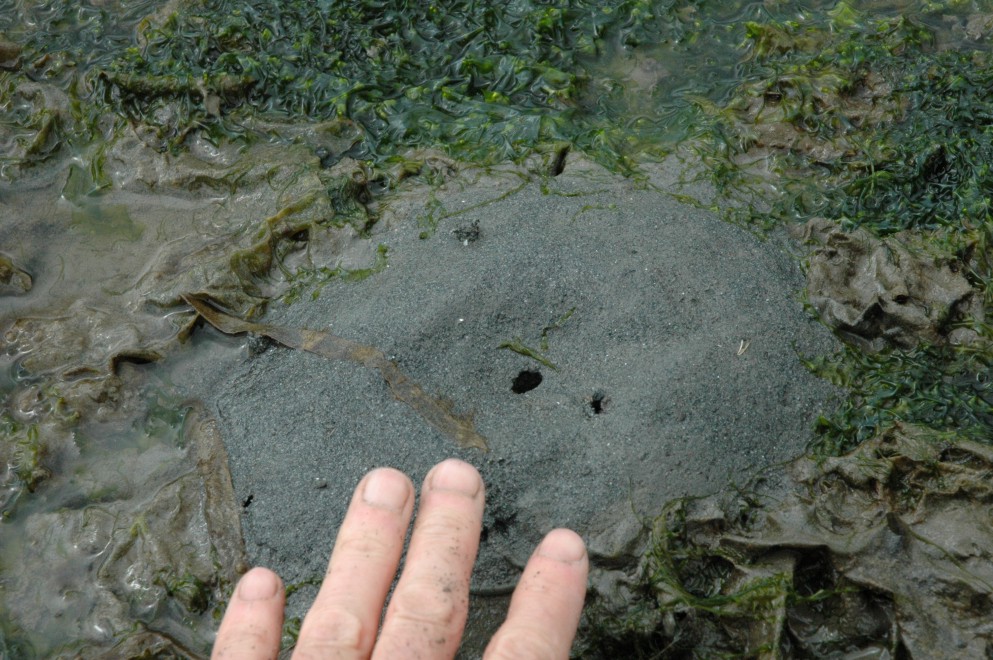
The worm creates burrows with large mounds at the entrance such as
this one. Often fecal castings can be seen on top of the
mound.
Authors and Editors of Page:
Dave Cowles (2008): Created original page
CSS coding for page developed by Jonathan Cowles (2007)
